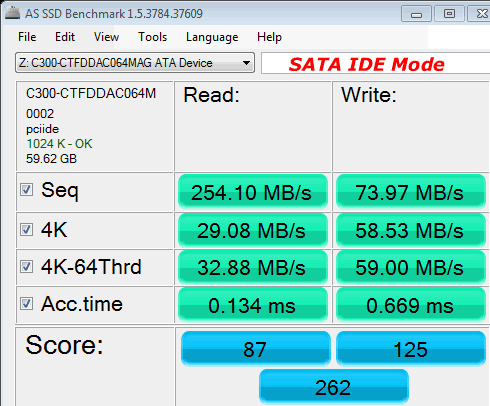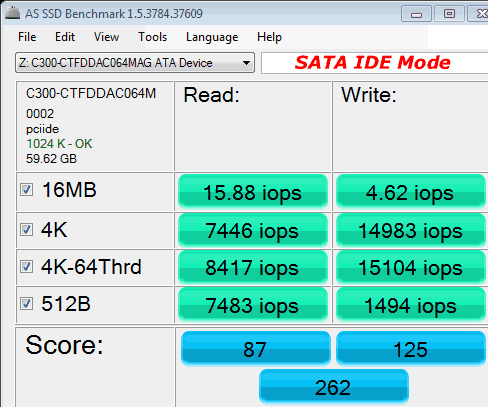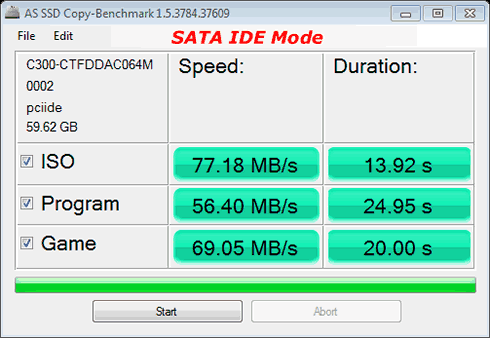Crucial RealSSD C300 64GB review
4. Benchmarks - page 2
The next benchmark is the CrystalDiskMark. The software provides throughput data based on sequential reads and writes, and random (512K/4K/4KQD32) reads and writes. We've used the default 1,000MB file-size for the tests.
The CrystalDiskMark gave an even higher performance, especially for the random 4K QD32 test:


The AS SSD Benchmark also provides sequential and random read/write tests, as well as other useful information about the drive's access times.
You can see the results in the below screen shots. Again the SATA AHCI mode seems to offer a better performance than the SATA IDE mode:






The next software we used was the ATTO Disk Benchmark. The tool measures storage systems performance with various transfer sizes and test lengths for reads and writes:


Iometer is run by using workstation and database patterns for queue depths (outstanding I/Os) of two and 32, representing very light and moderate loads. Iometer is both a workload generator (that is, it performs I/O operations in order to stress the system) and a measurement tool (that is, it examines and records the performance of its I/O operations and their impact on the system). It can be used for measurement of the performance of an SSD.
We run the IOMeter tests using the Xtreme Benchmark template. Here are the results:

Compared with previous SSD we have tested in the past, the Crucial RealSSD C300 64GB is significantly faster, producing an IOPS rating of 4942.50 - is decent for a s$150 drive. In addition, the SSD has lower I/O response times:






















